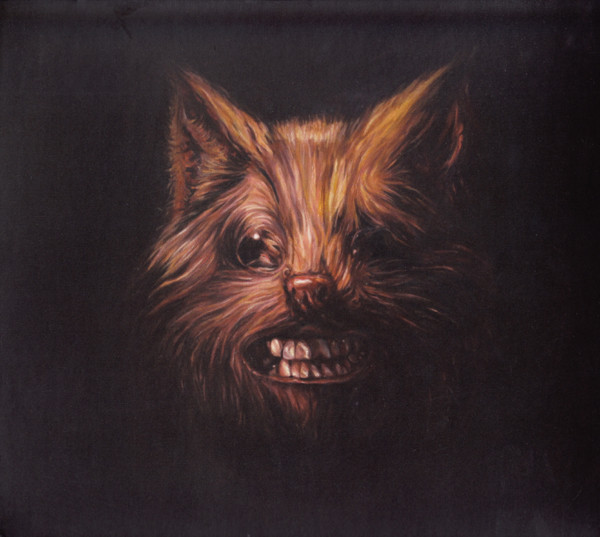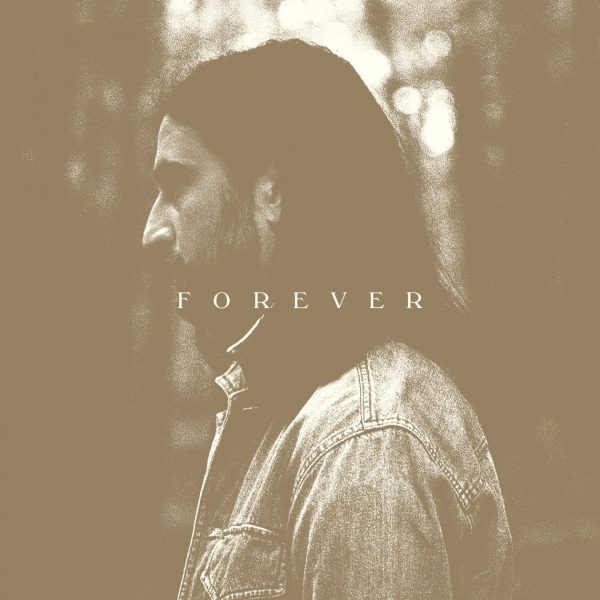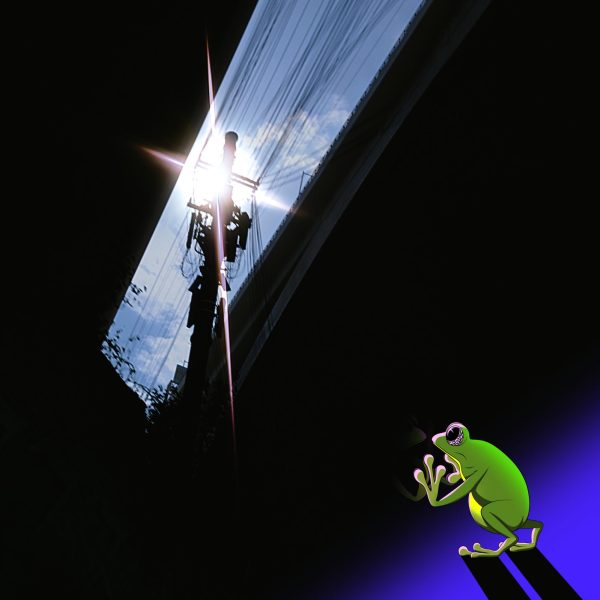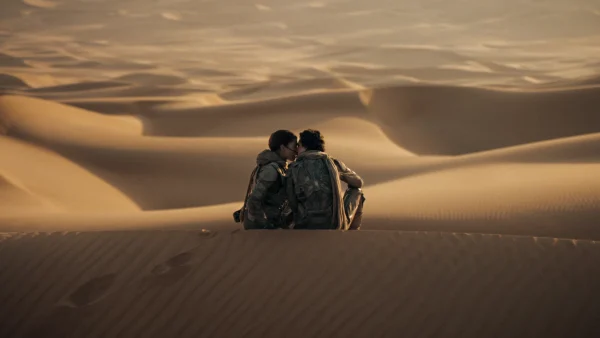Swans’ The Seer: a heavenly odyssey that sounds like it came from Hell

Photo by Swans
An enlarged version of the creature on the front of Swans’ The Seer.
March 5, 2022
![]()
Swan’s 2012 album The Seer is one of the boldest albums of the past decade, while also sounding so harrowing and terrifying that it could have come out of the depths of hell.
Swans is a post-rock outfit formed in 1983, masterminded by ex-convict and mad scientist Michael Gira. Their music, from the beginning, has always sounded like rock’s fundamentals so greatly corrupted and butchered that they might as well be their own genre entirely. The Seer is the band’s best LP to date, and easily their most abstract and evil-sounding. Over the two hours that this behemoth spreads its black wings, listeners will hear crushing noise, unusual instruments, incredibly long tracks, and Gira’s manic vocal delivery.

The Seer comes after a nearly 15-year new music hiatus from the band, and 2 years after a significant restructuring of the Swans’ lineup of members. The album’s recording and production was funded with the selling of live CDs with material from the album-to-be, but many of the songs on these CDs had a dramatically different pace and structure to their appearance on The Seer. Gira described the album at a live show as taking “30 years to make”, and “the culmination of every previous Swans album as well as any other music I’ve ever made.”
“Lunacy” starts the album with a religious chant in praise of some kind of horrific creature, possibly the one on the front cover. Between chants, a piano in minor key and a plodding guitar fill the air, creating a sense of dread. Finally, the chant devolves into “lunacy, lunacy, lunacy…” with the guitar starting and stopping in the same rhythm. After this melody spirals down into one’s core, an almost somber acoustic passage ends the song. “Your childhood, is over” is repeated to the end of the song. It is a truly chilling start to the album, despite its relatively short 6-minute runtime.
“Mother Of The World” starts with a marching electric guitar and snares that beat into one’s skull for a draining four minutes, reminding the listener of some kind of ritual song perhaps dedicated to the same beast in “Lunacy”. The sound suddenly cuts out to Gira’s rhythmic, heavy breathing and an explosive second half. The piano adds a truly otherworldly feel to this song, and really helps tie the piece together.
Following this track, a 2-minute interlude bridges “Mother Of The World” and the title track, called “The Wolf“. The latter is almost entirely spoken-word, with no instruments besides a faint mechanical humming in the background. It changes the atmosphere of the track completely and leaves the listener with a feeling of dread, perfect for what comes next.
The monstrous 32-minute-long “The Seer” is an absolutely crushing piece and the second best track on the album. It starts immediately after “The Wolf” and opens with ear-splitting bagpipes that drone on for about 2 minutes, fading out into a manic, minor-key guitar, and the most menacing drumming ever laid to tape. The listener is too far in to escape, and is fully enveloped in a sea of droning guitars and Gira’s layered vocals, chanting “I see it all, I see it all, I see it all” ad nauseam. The noise slowly fades out into a synchronized drum and guitar line that shoots one in the chest like a machine gun. The riff starts very slowly, but gets faster over a drawn-out string section with bells layered on top, before cascading into a wall of noise. The dam breaks loose, and listeners are eventually left with a quiet harmonica solo that sounds like it is being played at the edge of eternity. The song concludes with some more guitar and harmonica, and ends quite abruptly.
But The Seer returns! Quite literally, in the song “The Seer Returns“, which is almost as if Swans and Primus had a steamy affair. The contrast between this track and “The Seer” is spectacular. Gira flexes his lyrical skills over the most sinister-sounding funk line one could possibly compose.
“Behind the veil of silver scars, there is a special inverted star
He’s a greasy beast, heaving in a field of sticky black mud”
The 6-minute breather serves as a nice break after the skull-crushing title track. Afterwards, listeners plunge even further into the depths of hell with “93 Ave. Blues“. There is not really a melody to this one, but it does a great job at building atmosphere with the terrifying sound of the clarinet throughout the piece.
“93 Ave. Blues” leads into “The Daughter Brings The Water”, which is honestly a little bland, and does not have much to chew on. The song is barely over 2 minutes long, so it is not a deal-breaker. It is a slightly underwhelming aspect of part 1 of this album.
The ending to part 1, however, is totally excused by “Song For A Warrior“, the opener to part 2 of the album. Karen O of the band Yeah Yeah Yeahs lends her voice to an instrumental backed by a hopeful-sounding piano. There is no better way to begin the second part than with this track, which provides an almost uplifting tone after the listener has been dragged through the mud for the entirety of part 1.
“Song For A Warrior” leads into “Avatar“, easily the most underrated track on the album. It is a return to the manic energy of the last couple songs, suggesting that the hopeful imagery of “Song For A Warrior” was an illusion after all. “Avatar” uses church bells over a droning static, with drums and bass that sound like they are at each other’s throats. The electric guitar crushes the listener with its threatening aura. It is not too far a stretch to assume this song is from the perspective of the terrible beast often mentioned on the record, talking down to the underlings of hell. Gira chants “Your light is in my hand” over a repetitive instrumental, and it really feels like it.
The last two tracks are each 20 minutes in length, and have a lot for the listener to chew on. “A Piece Of The Sky” opens on the sound of crackling flames, with a haunting choir and mechanical humming following, and stretching on for roughly the first 9 minutes of the song. The choir, ironically, sounds absolutely angelic over the sound of clanging bells, and puts listeners into a trance. Abruptly, a marching rhythm of sleigh bells and electric guitar fill the air, likely startling the listener. This decision was surely intentional, and it really helps grab one’s ears. After about 5 minutes, the hypnotic rhythm peters out into a sweet ballad with bells and an acoustic guitar, accompanying the best lyrical passage on this 2-hour odyssey delving into the most depraved corners of humanity. The choice to put a ballad of heartbreak and longing on the last leg of the album gives the listener an emotionally potent punch to the gut.
“In the now that is not
on a ladder to God
On a mountain stripped bare
With your hand in my hair
Behind the face of the sky
on a disappearing line
Are you there?”
“Apostate” is the album closer, and the highlight of the album. The song opens with a harrowing electric guitar that sounds like it came from the deepest reaches of hell. The guitar drones on for several minutes over rattling cymbals, and prepares listeners for the roller-coaster to the end of the album. Suddenly, a pounding, rhythmic melody of drums and guitars that trade places every beat fill the dead air, swelling into a manic haze of noise that has no starting or stopping point. Another machine-gun drum melody butts its way though the mix and overpowers every other instrument. The album ends in a glorious blaze of noise, with Gira screaming near-incoherently in an echo chamber.
Gira fans will absolutely adore this album, but it is definitely not for everybody. This is honestly the best album of the last decade (yes, even better than MBDTF). For those who are patient and unafraid of something more experimental, there is a lot to love on The Seer.














